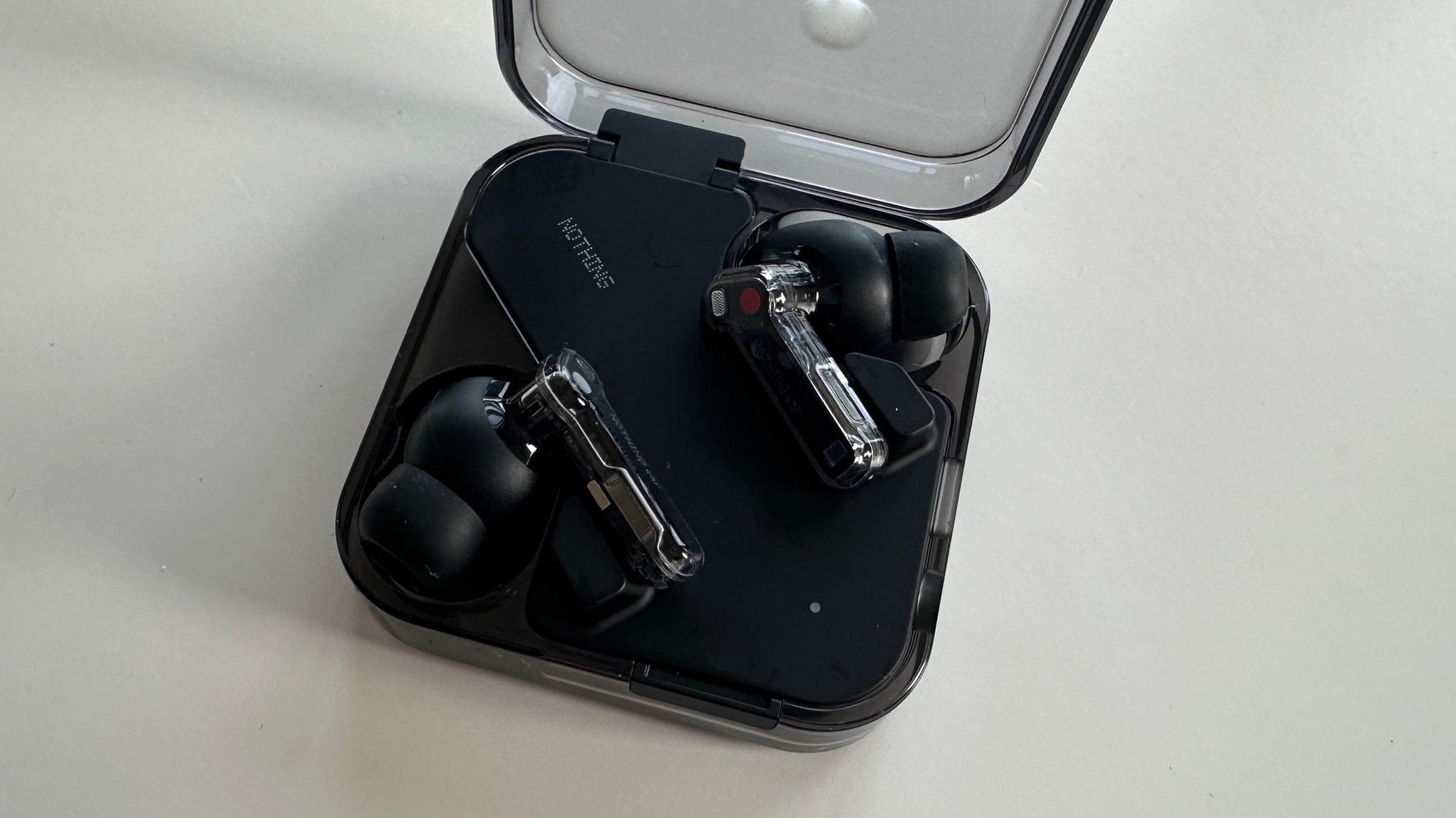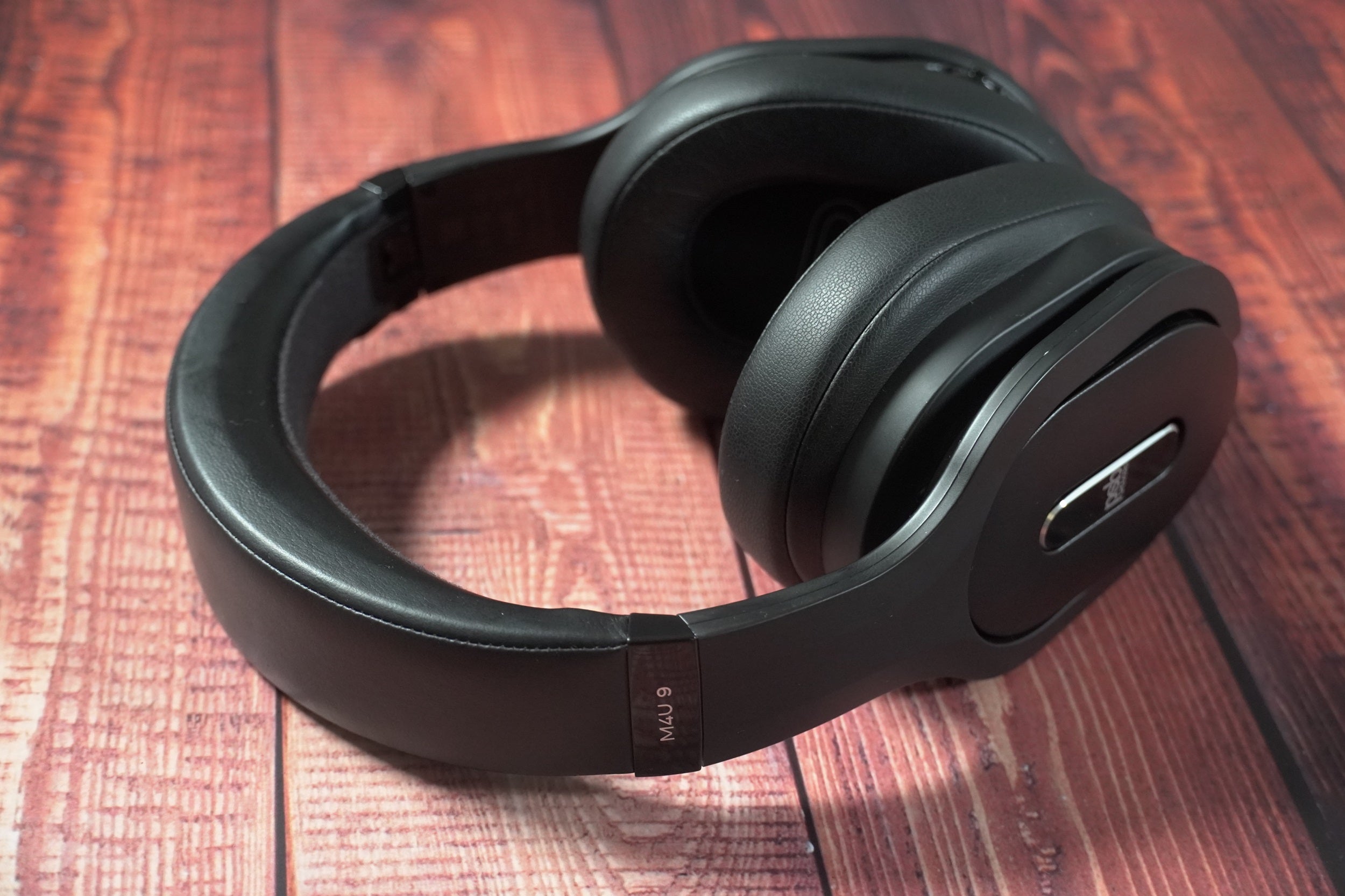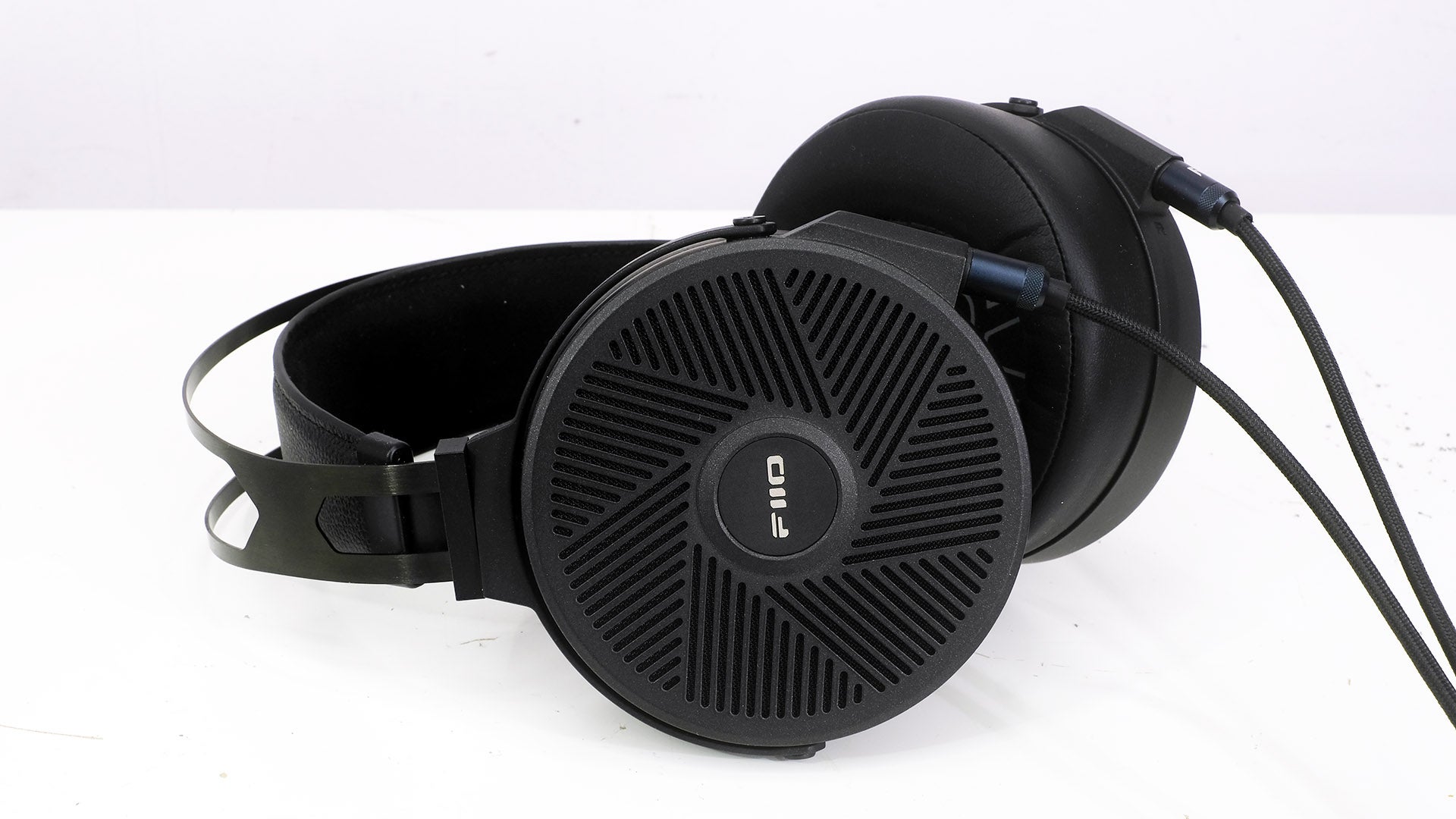Lypertek PurePlay Z5 ANC Review
Affordable ANC buds that give noises the heave-ho
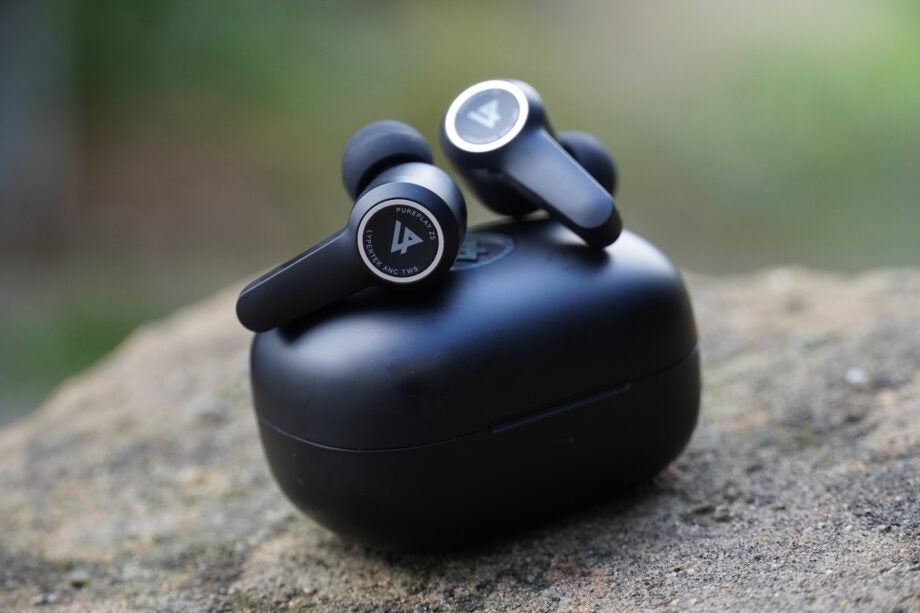

Verdict
Lypertek’s first foray into noise-cancelling impresses with the PurePlay Z5 with an entertaining audio performance and strong ANC for the price. Comfy fit, easy operation and app customisations help make the Z5 an easy-to-use pair of headphones, though battery life and signal connection aren’t the best.
Pros
- Great, comfortable fit
- Balanced audio
- Strong noise cancelling/ambient sound modes for the money
- Easy to operate
Cons
- Call performance susceptible to noise
- Battery life weak with ANC
- Choppy connection in busy areas
Availability
- UKRRP: £119.00
- USARRP: $129
- EuropeRRP: €129
Key Features
- LDX modeSpices up playback with more depth and detail
- Auto-Ambient modeEnters Ambient mode automatically when music is paused
- AptX AdaptiveAdapts bit-rate of audio to keep playing when faced with signal interruption
Introduction
Lypertek has been our budget earphones champion of recent years, emerging on the scene with the PurePlay Z3 (nee Tevi) and backing up its credentials with the fantastic PurePlay Z3 2.0.
The PurePlay Z7 saw the brand attempt to enter the pricier end of the market, with mixed results. So the PurePlay Z5 – keep up with the model numbers – sees Lypertek take a step back from the premium end, but a step forward with the introduction of active noise cancellation.
Eighteen months ago, £120 for a pair of noise-cancelling earphones would have seemed a foreign concept, but a flood of affordable ANC earbuds sees the Z5 up against competition from some big brands. What’s Lypertek got up its sleeves?
Design
- Comfy fit
- Responsive touch controls
- Black, discreet finish
Lypertek has moved in a different direction with the PurePlay Z5’s design. The inspiration is more Apple AirPods Pro, and it proves to be a good decision. The fit is comfy, the seal created is reliable at batting away sounds, and the angled driver helps by offering a little more leeway in wiggling the Z5 into position.

Some people loath touch controls, but they work very well on the Lypertek – almost too well. A hold runs through the noise-cancelling modes (on, ambient, off); taps are prioritised for playback; and a tap followed by a hold calls up voice assistance. It’s a swift method of operation.
However, even a slight adjustment of the buds can result in an accidental press – a reminder of the reason some prefer physical buttons. Controls are mirrored across both buds, useful for lefties and righties.
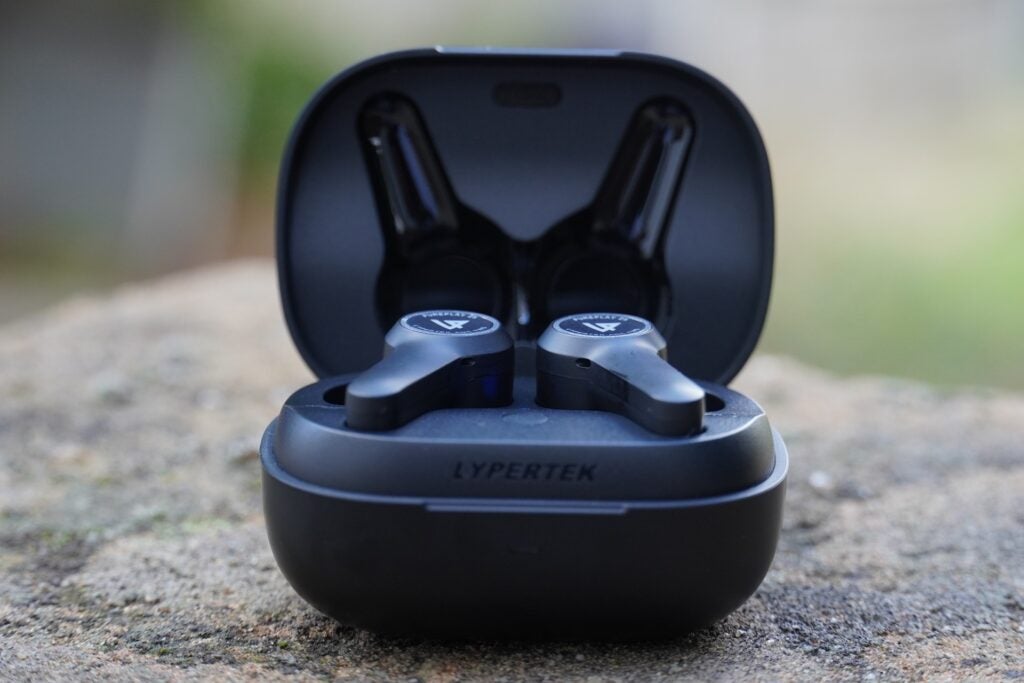
The black matte finish is plain and can attract smudges, the only stylistic flourish being the silver-tinged halo that features on the earphones and matching black charging case. The case is petite with a battery indicator on the front that briefly flashes a colour to show its current level when opened, while inside is a Bluetooth pairing button. Water/sweat-resistance for the buds is IPX4, but there’s no mention of the case’s rating.
Features
- Strong noise cancellation
- Microphones pick up noise with calls
- Auto-Ambient mode disables ANC when music is paused
There are affordable noise-cancelling buds from Urbanista, Sennheiser, Beats and Cleer that look to make the case for ANC at this price, and in my opinion, the PurePlay Z5 trumps them.
I’ve noticed in other reviews that noise cancelling is often cited as the weakest aspect, but I find myself veering towards the other end of the spectrum – for me, the hybrid noise cancelling convinces. The sound of car engines are reduced to hums; it works great on trains, tube and buses. It avoids whipping itself into a frenzy when faced with wind, as well as diminishing people’s voices and crowds with authority. The one notable issue is that some sharp, sudden sounds can cause a degree of distortion.
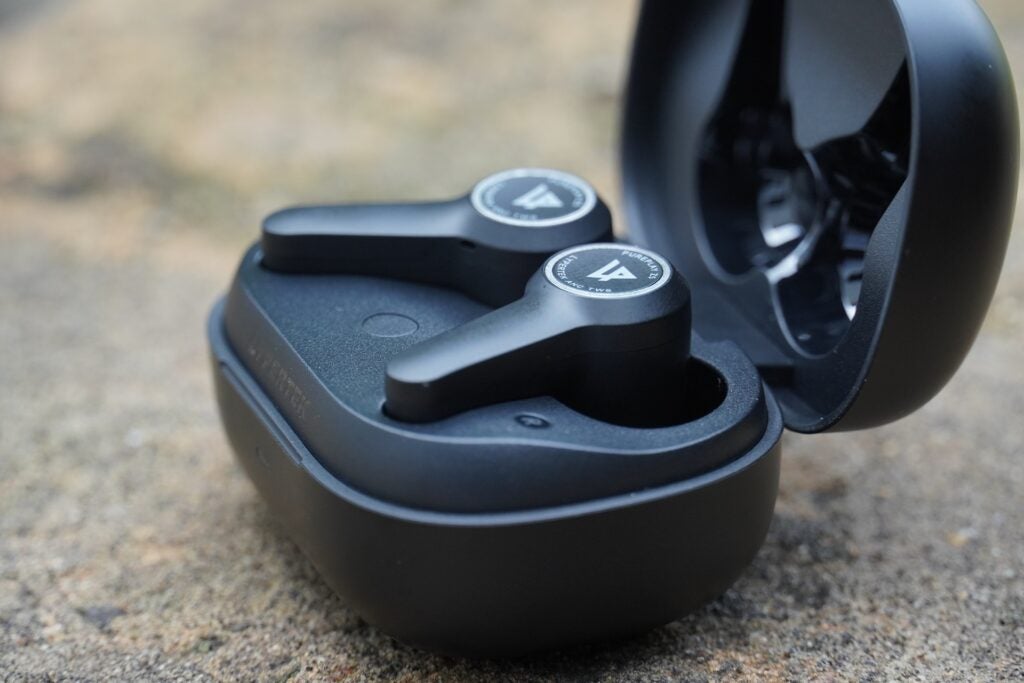
Noise cancellation in the PurePlay Z5 suppresses more than I experienced in the CX Plus, and the fit is less fiddly than either the Studio Buds or the Ally Plus, so these buds start from a better position of strength. Not all sounds are removed, but it’s sufficient to keep interruptions low – and it’s even more impressive since there’s no need to turn up the volume for assistance.
Also good is the Transparency mode. It’s open, clear and functions without much noise. It passes sound through naturally without sounding artificial, which makes it easier to have a conversation with someone. It’s a step up from that offered by the SoundFreeS20 and the PurePlay Z7, both of which distractingly raised the noise floor. The Auto-Ambient feature – which can be toggled on in the app – switches to passthrough mode when music is paused, which is convenient if you’re about to talk to someone or head to a counter in a shop.
Call quality performance is average. While I could hear the other person well enough, and they remarked they could hear my voice fine for the most part, in busy areas the Lypertek’s six-strong microphone setup picked up sounds around me, obscuring my voice. It’s better than the PurePlay Z7 model for vocal clarity, at least.
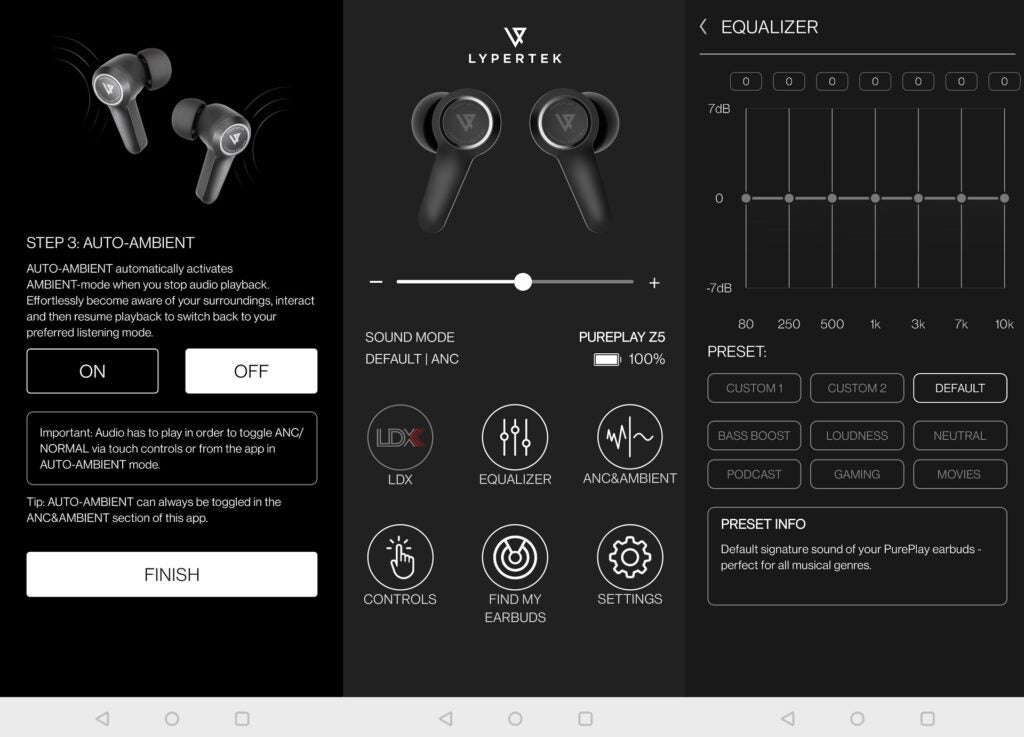
The accompanying app differs slightly from the standard version of the non-ANC models. It’s called PureControl ANC and its appearance is identical while also carrying over many of the same features.
There’s a seven-band EQ, but the EQ options in general have shifted. Music genres such as jazz, pop and R&B are out, replaced by options such as loudness, neutral, podcast, gaming and movies. This pivots the earphones towards general multimedia use: podcast enhances voices; gaming increases spatial awareness; movie adds “excitement”. As is the case with the PurePlay Z7 and Z3 2.0 models, the LDX mode supersedes the EQ options when engaged.
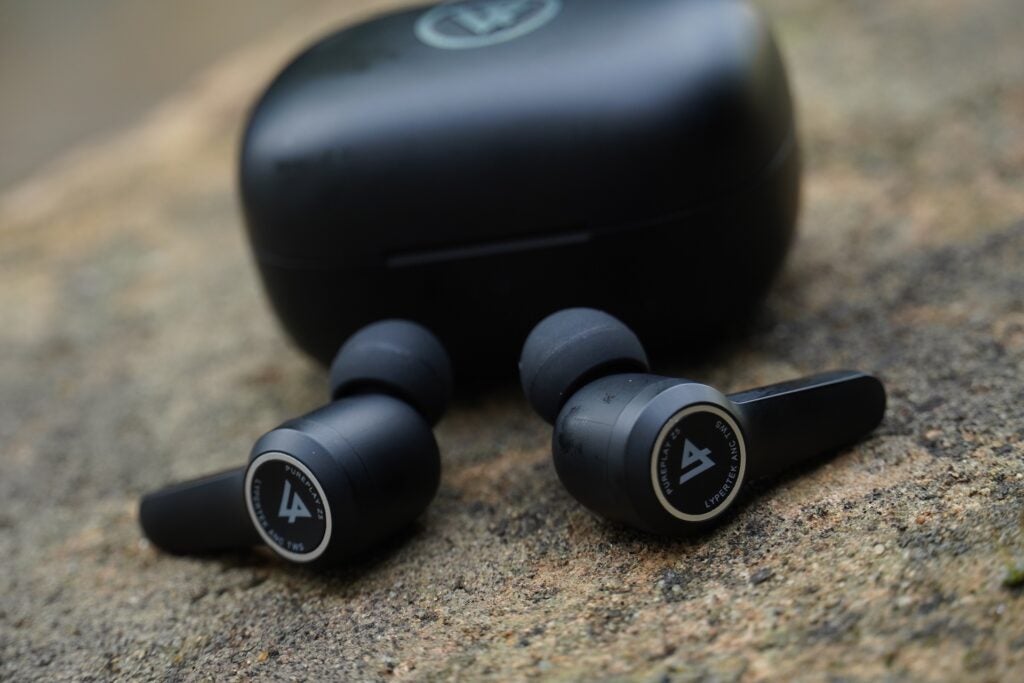
There’s Bluetooth 5.2 coupled with aptX Adaptive, and I didn’t find the connection to be the stickiest, despite that seemingly winning combo. Walking through Victoria and Waterloo stations in the evening, the signal came to a crawl, and it was similar en route to Purley Way. In busy areas, the Lypertek’s signal became very choppy.
Battery is seven hours without ANC, and four hours with it on, which sounds about right. Listening for a couple of hours, the battery dropped to 50%; approaching three hours it fell to 30%. With the charging case, battery life sits at 28 hours with ANC off, and 20 hours with it on. It’s a figure that’s worse than the Beats Studio Buds, Sennheiser CX Plus and Cleer Ally Plus II, so if you’re after longer battery life, there are better options. Battery features are filled out with wireless charging support, and fast charging delivers two hours from a 15-minute top-up.
Sound Quality
- Rather so-so LDX mode
- Tonally balanced performance
- Sound best with ‘loudness’ EQ activated
At first, I found the PurePlay Z5’s audio performance flat. There wasn’t the excitement I remembered from the PurePlay Z3 2.0; the sound was balanced, but also felt reined in. Perhaps it has something to do with the move to a standard dynamic driver rather than the graphene on the older model.
It didn’t help that the LDX mode felt less impactful, like it did on the Z7. On the PurePlay Z3 2.0, the LDX mode brought out more definition, scope and energy. However, the difference between the tuning of the default and LDX mode on the Z5 isn’t massive; some more bass, slightly bigger in size and moderately louder.
But you’ve noticed the score, so something evidently changed – and that came through playing with the EQ options. The “loudness” mode came up trumps, described in the PureControl app as pushing all the frequencies with extra power to the low-end and mids. With a slight nudge on the volume level, it does what I expected the LDX mode to contribute.
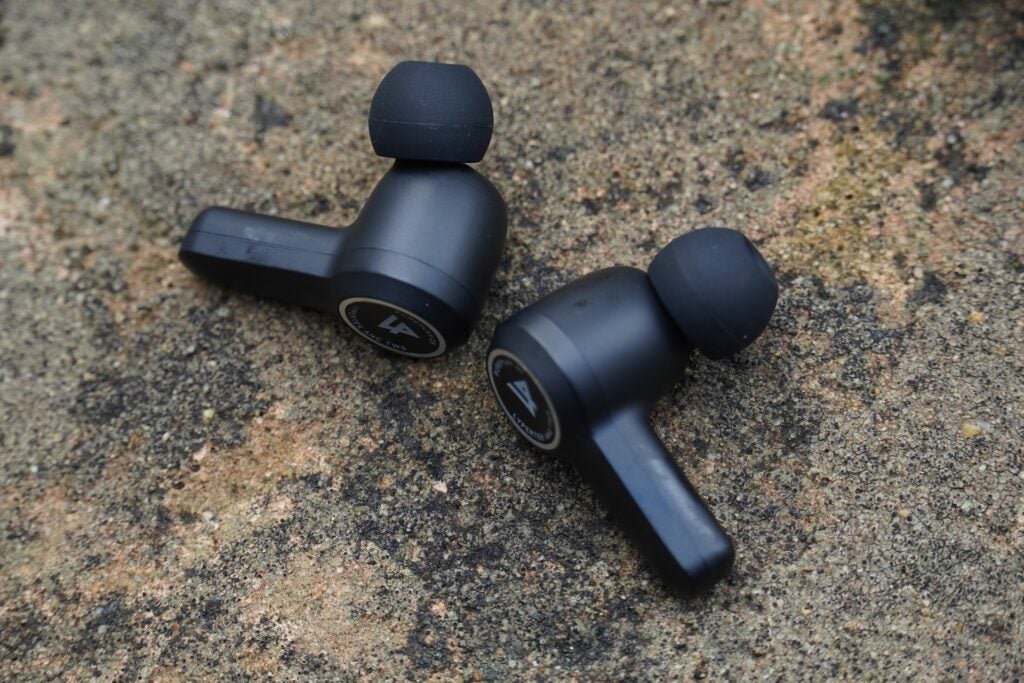
With the loudness EQ on, bass is described in larger terms, punchier and with more depth than it has on ‘neutral’ and ‘default’ EQ modes. It worked well with Snoop Dog’s Beautiful, making the ever-present bass beat more obvious, and extending the dynamic range over the flatter EQ modes. It turned a song that was a bit bland in its description into one that was more engaging.
Even without the loudness EQ on, the Z5 ANC’s frequency range is balanced – no aspect sounds recessed or quieter than any other. As noted with other Lypertek earphones, the mid-range performance here is clear and spacious, if not the most defined.
Vocals have a bigger presence than they do on the Beats Studio Buds with Lianne La Havas’ Bittersweet, although the Studio Buds’ sharpness and clarity gives them the edge in terms of defining her voice. Watching a video on YouTube brought about some sharp sibilant traces, but switching to the podcast EQ smoothed them out.
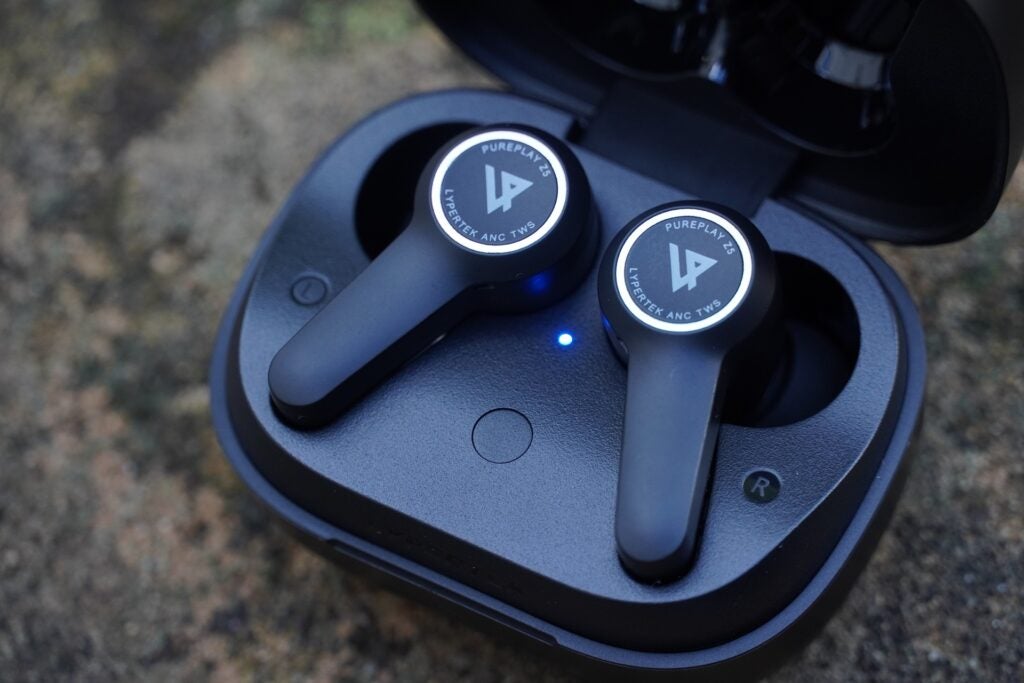
The Lypertek’s soundstage is bigger and wider than the Beats, and the space afforded by the Z5 ANC allows the buds to bring more details to the fore, details that come across as smaller and concealed on the Beats.
Rhythmically the Beats are a better option. Listen to Makaya McCraven’s Half Steppin’ and there’s more space and separation to the fast drumbeats than what I can hear from the Lypertek, which are less insightful in how they relay the tempo.
And high frequencies? They’re handled well, with more shine and presence than I’ve heard in similarly priced buds with go-to track Raven by GoGo Penguin, and that assists in the Lypertek’s sense of dynamism. All told, the Lypertek Z5 ANC’s sound makes them a malleable fit with a range of genres, an entertaining listen for whatever genre you enjoy.
Latest deals
Should you buy it?
For impressive ANC sound for the money The Lypertek won’t trouble the likes of Bose and Sony for noise cancellation, but the ANC performance along with their sound quality make them one of the better options for those who don’t want to spend big money.
You expect more longevity A four-hour battery life with noise cancellation engaged isn’t great. It’s worse than comparable Beats, Cleer and Sennheiser buds. It’s likely you’ll be charging these often, which isn’t convenient.
Final Thoughts
Perhaps I’m out on my own here, but Lypertek Z5’s noise cancellation impresses for the money; it’s one of the stronger efforts I’ve experienced at the price.
These buds are strangers to built-in smarts, but the new app offers a few ways to customise the experience – from the EQ settings to noise cancellation. The design gets plenty right and these earphones are easy to operate, too. While the PurePlay Z5s aren’t the out-and-out best ANC buds at this price – that award currently goes to the Edifier NeoBuds Pro – I’d certainly rate them above their Beats and Sennheiser rivals for sound.
How we test
We test every headphone we review thoroughly over an extended period of time. We use industry standard tests to compare features properly. We’ll always tell you what we find. We never, ever, accept money to review a product.
Tested for several weeks
Tested with a range of music
Tested with real world use
FAQs
Yes, the case supports wireless charging with any Qi wireless plate. You can purchase one from the Lypertek website for £25.
The Z5 ANC comes with a wide range of ear-tips, including PureSpace Silicone Tips (in XS, S, M, L, XL), PurePower Silicone Tips (in S, M, L) and PureComfort Foam Tips (in S and M) for the best fit possible.




